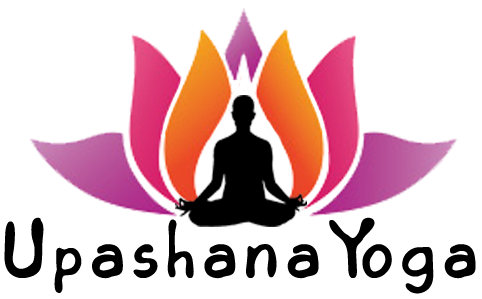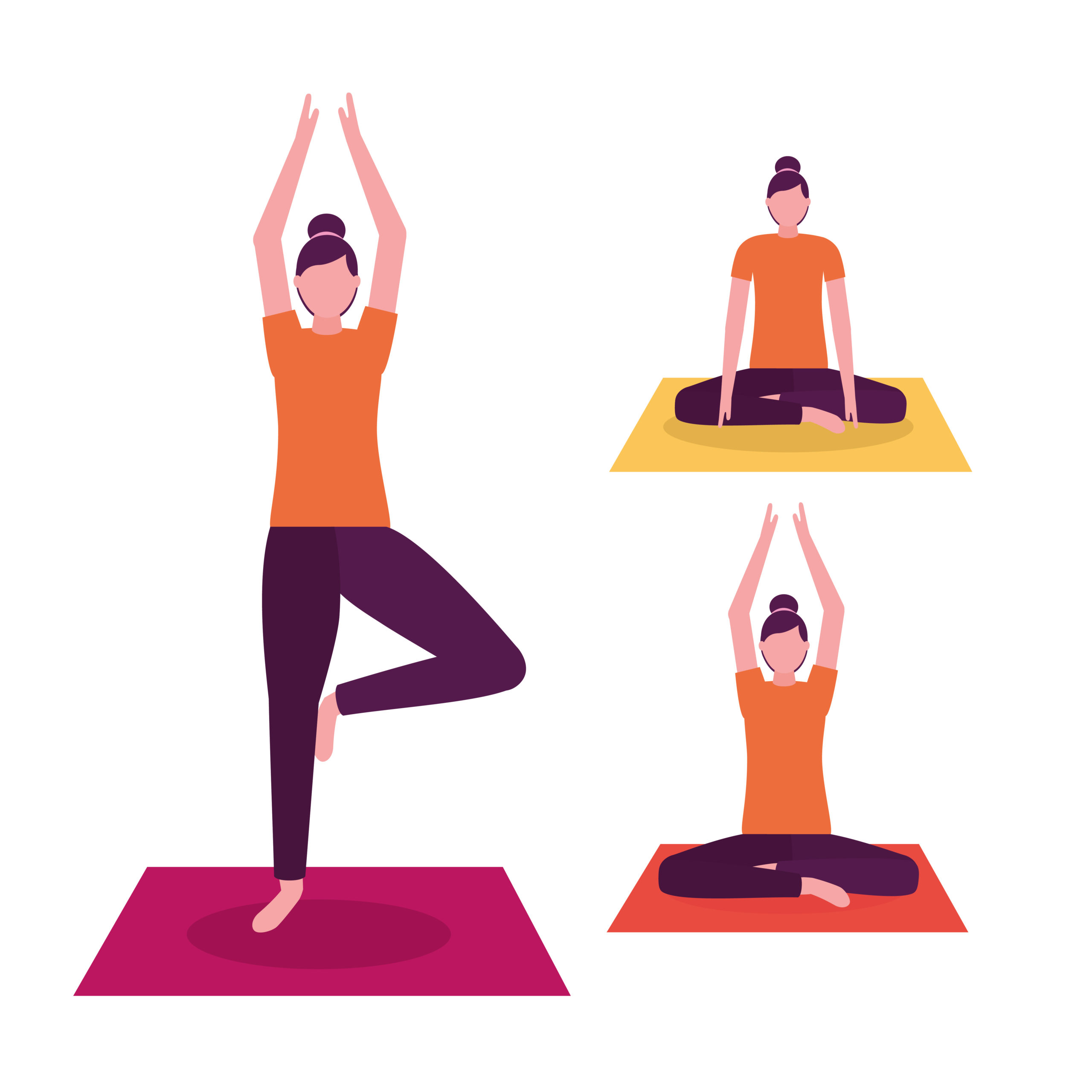
Chakki Chalnasana yoga is considered to be the best among other asanas when practiced early in the morning. If, for some reason, you are not able to practice it in the morning time then you can also practice this Chakki Chalnasana yoga posture in the evening. Morning time is considered good for digesting food properly, and in the morning, your body has the energy to do the asanas. This yoga asana massages your spine and helps in keeping your spine supple and flexible, and can also help you sleep better. Chakki Chalnasana yoga is also beneficial in weight and belly reduction. Let us know in detail how to do this Chakki Chalnasana yoga asana and its benefits.
What is Chakki Chalnasana?
The name of Chakki Chalnasana yoga asana is derived from Sanskrit, where “Chakki” means “mill or grind”, “Chalan” means “churn or drive,” and “Asana” means “pose” or “posture”. While practicing this asana, your body appears as if you are operating a mill, hence its name is Chakki Chalnasana.
This asana is called Churning the Mill Yoga Pose in English. Hand-operated mills are very common in India, where women use them to grind wheat. It is a good and incredible workout for the body. This asana helps in reducing laziness and makes you feel energetic throughout the day. Let us know in detail about the method of doing this asana and its benefits.
Do this asana before doing Chakki Chalnasana Yoga
Before doing Chakki Chalnasana Yoga Asana, practice some of the yoga asanas given below, which will make it easier for you to do this asana-
- Dandasana or Staff Pose
- Padangushthasana or Standing Big Toe Pose
- Paschimottanasana or Seated Forward Bend
- Matsyasana or Fish Pose
- Ushtrasana or Camel Pose
How to do Chakki Chalnasana Yoga:
Here’s a detailed guide on how to practice Chakki Chalanasana or Churning the Mill Pose, including step-by-step instructions and tips to ensure proper alignment and effectiveness:
Start in a Seated Position:
Begin by sitting on the floor with your legs extended straight in front of you. Spread your legs apart as wide as you comfortably can. The wider the legs, the deeper the stretch, but don’t force the hips beyond their natural range of motion. Ideally, aim for a 90-degree angle or wider. Keep your spine straight and avoid slumping or rounding your back.
Engage the Core:
Sit up tall with your shoulders relaxed but engaged. Imagine lengthening your spine from the base of your pelvis to the crown of your head. Keep your core engaged and your chest lifted.
Position Your Hands:
Extend your arms out in front of you, and interlace your fingers together (as if holding a mill handle). Keep your elbows straight and arms extended. Make sure your wrists and elbows are aligned, and avoid collapsing your shoulders forward. The arms should remain active and straight throughout the movement.
Initiate the Churning Movement:
Begin by rotating your torso to the right (like you’re churning a mill). As you turn to the right, bend forward slightly at the waist, maintaining a straight spine.
Imagine you’re drawing a large circle with your torso, and use your arms to help guide the movement. Engage your abdominal muscles as you rotate, and feel the stretch in your spine and torso. Inhale as you move forward and exhale as you twist and move back.
Complete One Full Rotation:
Perform the movement as if you are churning a mill, continuing to rotate the upper body in a circular motion. Rotate right and left for several rounds (usually around 10–15 times each direction). Try to keep the motion smooth and controlled, and avoid jerking or forcing the rotation.
Reverse the Direction:
After completing the rotation to the right, reverse the direction. Begin by rotating your torso to the left and continue the churning motion. Perform the same number of rounds (10–15) in the opposite direction.
End with a Relaxing Stretch:
After completing both directions, relax your arms, bring your legs back together, and sit in a comfortable position. Take a few deep breaths to relax and allow the body to absorb the benefits of the movement.
Alignment Tips & Modifications:
Spine Alignment: Keep the spine long and straight during the entire movement. Avoid rounding or collapsing your back as you twist.
Leg Positioning: Don’t force your legs wider than your body comfortably allows. It’s better to keep the legs at a comfortable width than overstretch the hips.
Shoulder Engagement: Keep the shoulders away from the ears to avoid unnecessary tension. Engage your upper back muscles to support the arms and shoulders.
Breath Awareness: Sync the breath with the movement. Inhale as you move forward and exhale as you twist backward.
Core Activation: Maintain a strong engagement of the core muscles (especially the abs and obliques) throughout the movement for stability and effectiveness.
Benefits of Chakki Chalnasana Yoga:
Chakki Chalanasana, also known as the Churning the Mill Pose, is a dynamic seated yoga practice often used in traditional Hatha Yoga and Pawanmuktasana Series. It involves rotating the upper body in a circular, grinding motion while sitting with legs spread apart.
Though it appears simple, Chakki Chalanasana offers numerous physical and therapeutic benefits, especially for the abdomen, spine, and reproductive system.
There are many benefits of doing Chakki Chalnasana Yoga, It helps in curing various types of diseases in our body. Let us know the benefits of Chakki Chalnasana Yoga in detail-
Chakki Chalnasana Makes the Spine Flexible:
Chakki Chalnasana is a beneficial yoga in making your spine flexible and also helps in improving your posture. It also helps in reducing the signs of old age on your body. This yoga asana also gives a good massage to your vertebrae. You will feel an invigorating sensation in your vertebrae while practicing this yoga asana.
Chakki Chalnasana Helps In Treating Insomnia:
Chakki Chalnasana yoga helps in treating insomnia and helps you sleep comfortably. This asana also helps in removing the drowsiness and stiffness felt on waking up in the morning.
Chakki Chalnasana Helps In Balancing the Mind:
Performing Chakki Chalnasana yoga helps in balancing the mind, increases the power of concentration, allows more awareness even in the unconscious, and quickly achieves physical and mental relaxation. With regular practice of this yoga posture, the thinking process becomes very clear and precise.
Chakki Chalnasana is Beneficial in Reducing Stress:
Chakki Chalnasana yoga is also beneficial in reducing stress and curing mild depression. This asana also helps in increasing the strength and stamina of the body. It is also beneficial in relieving joint pain throughout the whole body.
Tones and Strengthens the Core Muscles:
The circular motion deeply engages the abdominal muscles, obliques, and lower back, improving strength and endurance. Helps in developing core stability, which is essential for posture and spinal health.
Improves Digestion:
The churning action gently massages the digestive organs (stomach, liver, intestines), stimulating digestive juices. Aids in relieving constipation, gas, and sluggish digestion.
Enhances Reproductive Health:
Stimulates blood flow to the pelvic region, including the uterus, ovaries, and prostate. Helps regulate the menstrual cycle, reduce menstrual cramps, and strengthen uterine muscles. Often recommended in prenatal yoga (in modified forms) and post-natal recovery.
Stimulates Blood Circulation:
The rhythmic movement encourages venous return and lymphatic drainage. Helps in removing toxins from the abdominal region and boosts energy levels.
Relieves Stress and Mental Fatigue:
The repetitive circular motion, when synchronized with breath, can become meditative. Helps calm the mind, reduce mental fog, and ease nervous tension.
Supports Weight Loss and Belly Fat Reduction:
When practiced regularly and with sufficient repetitions, it contributes to caloric burn and toning of the abdominal area. Can be part of a weight-management or post-natal recovery regimen.
Promotes Deep and Rhythmic Breathing:
Encourages conscious breath coordination with movement. Improves lung capacity and promotes awareness of diaphragmatic breathing.
Follow Up Poses:
After practicing Chakki Chalanasana or Churning the Mill Pose, it’s important to follow up with poses that help release the spine, relax the abdominal muscles, and counterbalance any strain that may have accumulated in the lower back or hips. These poses should also help integrate the benefits of the pose and bring the body back to a neutral or restorative state.
Here are some follow-up poses that complement Chakki Chalanasana:
- Paschimottanasana or Seated Forward Bend
- Balasana or Child’s Pose
- Jathara Parivartanasana or Supine Spinal Twist
- Setu Bandhasana or Bridge Pose
- Viparita Karani or Legs Up the Wall
- Apanasana or Knees to Chest
- Savasana or Corpse Pose
These follow-up poses are designed to help release tension, restore balance, and promote relaxation after the dynamic movement of Chakki Chalanasana. Incorporating these restorative poses into your practice will enhance flexibility, reduce muscle fatigue, and ensure a well-rounded experience.
Precautions to do Chakki chalanasana:
Before doing Chakki Chalanasana Yoga, take the following precautions-
- Pregnant women should not practice this asana.
- If you are suffering from high blood pressure or low blood pressure, or a slipped disc is bothering you, or any other type of back pain, then do not do this asana.
- If you have undergone a hernia or any kind of surgery, then do not do this asana.
- You should do this asana on an empty stomach and keep a gap of at least 4-6 hours after meals to do this asana.
- If you are suffering from any disease, consult a doctor before practicing this asana.
- Chakkichalanasana yoga should not be done beyond your capacity.
Conclusion:
Chakki Chalanasana or Churning the Mill Pose is a simple yet highly effective yoga asana that primarily targets the core, spine, and hips. The dynamic circular motion helps strengthen the abdominal muscles, improve digestion, and stimulate circulation. Additionally, it promotes flexibility in the spine and hips while supporting reproductive health and relieving stress.
When practiced mindfully, Chakki Chalanasana can be an excellent addition to any yoga routine, particularly for detoxification, spinal mobility, and toning. It is also a great way to enhance concentration and breathing awareness.
Integrating follow-up poses after the practice ensures balance and restoration for the body, contributing to overall well-being and relaxation.
Hi, I’m Yogashree Gupta a passionate yoga instructor and dedicated website administrator. With a strong foundation in both wellness and technology, I blend mindfulness with functionality to create seamless online experiences. I bring over 15 years of experience in yoga instruction, specializing in Hatha yoga, and a solid background in website management, including content updates, user support, and site optimization. My mission is to create spaces on the mat and online that help people feel grounded, empowered, and supported.
You May Also Like
Pawanmuktasana or Wind Relea ...
15 October 2025
Padangusthasana or Big Toe P ...
15 September 2025
Surya Namaskar or Sun Saluta ...
15 August 2025
About Us
upashanayoga.com is the home of yoga. Here in upashanayoga.com we describe a lot of about yoga you never ever knew about.
Newsletter
Categories
- Benefits Of Yoga (11)
- Meditation (3)
- News (3)
- Pranayama (8)
- Types Of Yoga (12)
- Yoga & Health (28)
- Yoga Poses (70)
Popular Post
Tag Cloud
Favourite Quotes
My favorite things in life don't cost any money. It's really clear that the most precious resource we all have is time.
- STEVE JOBS










Leave a Comment